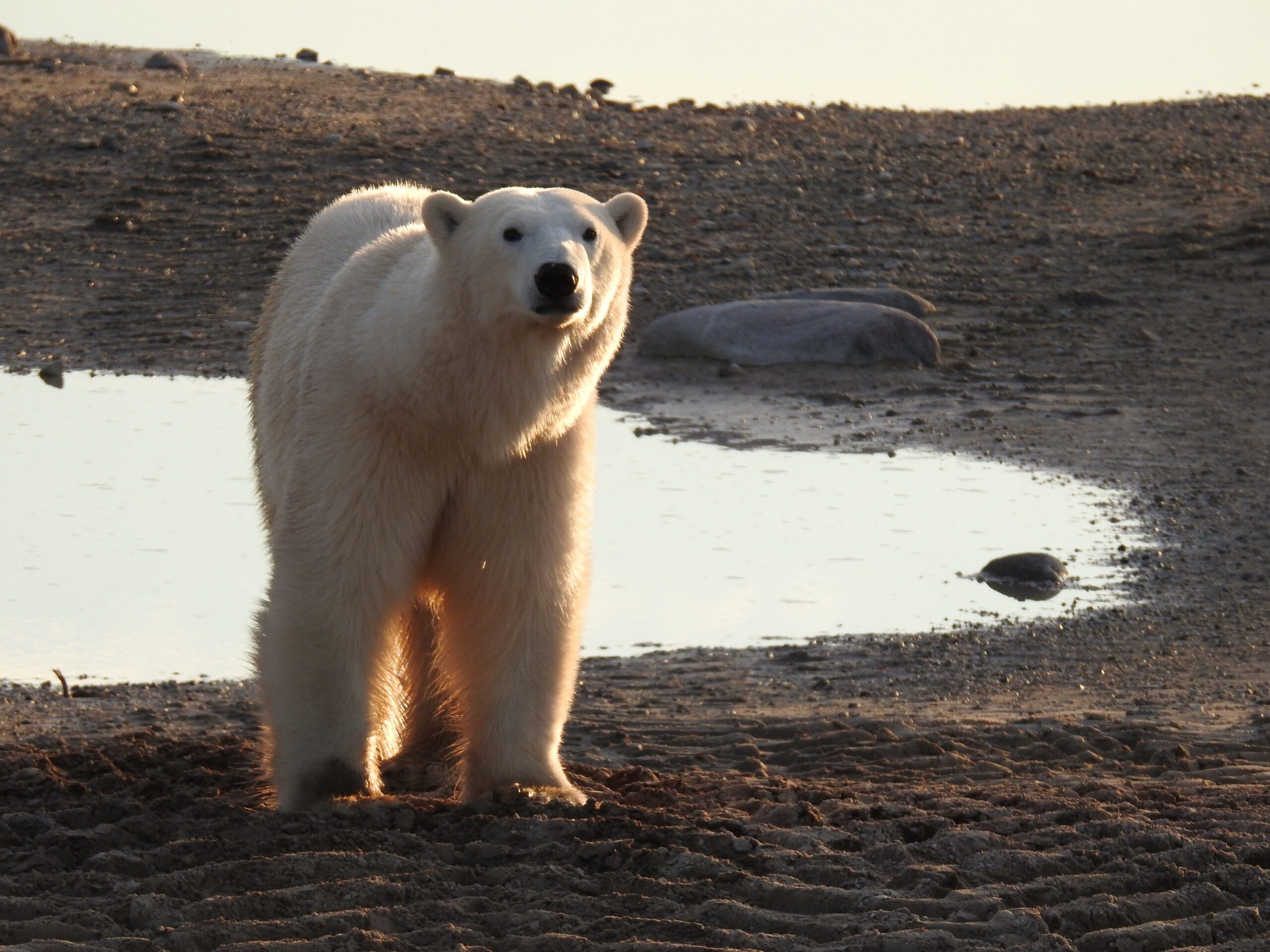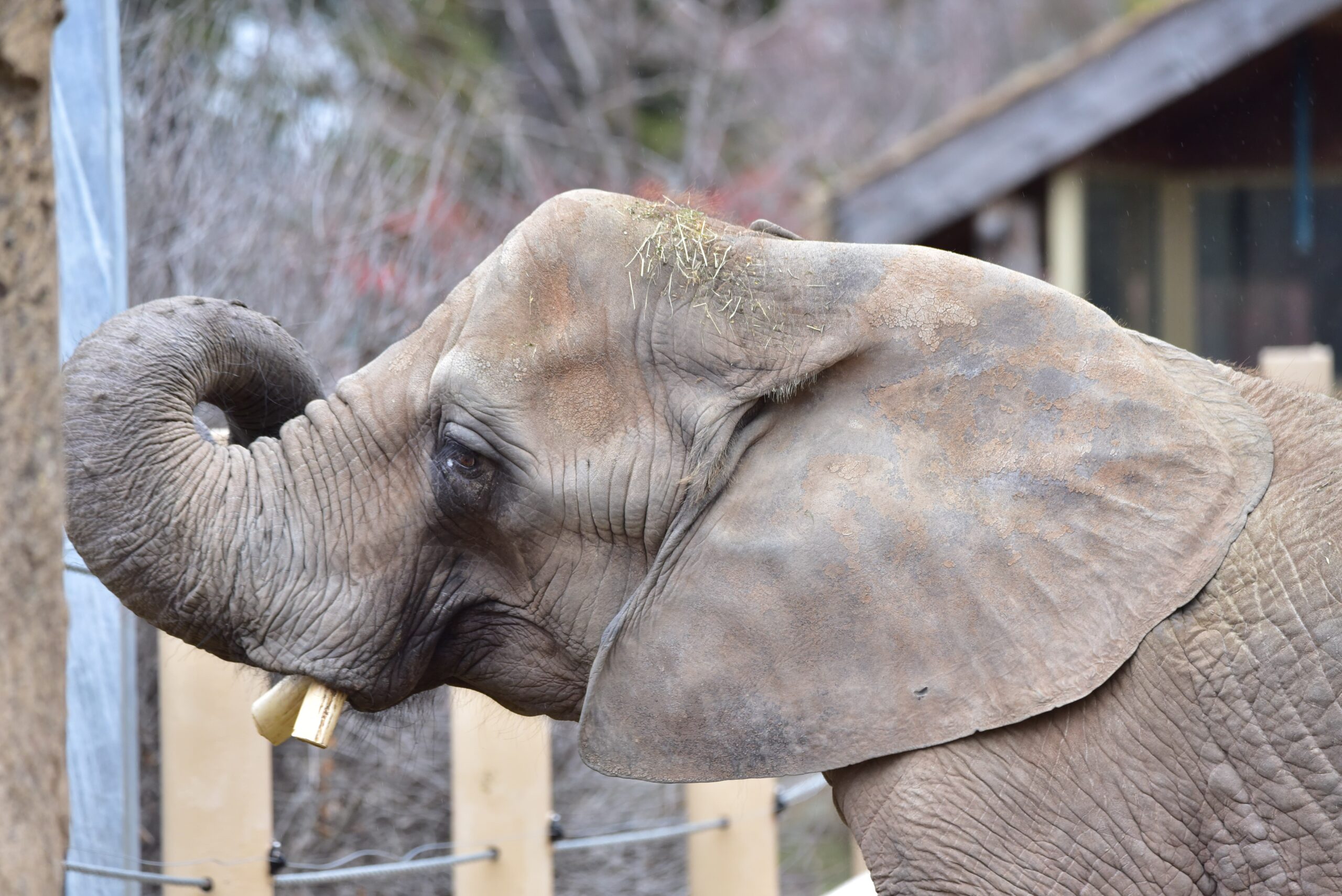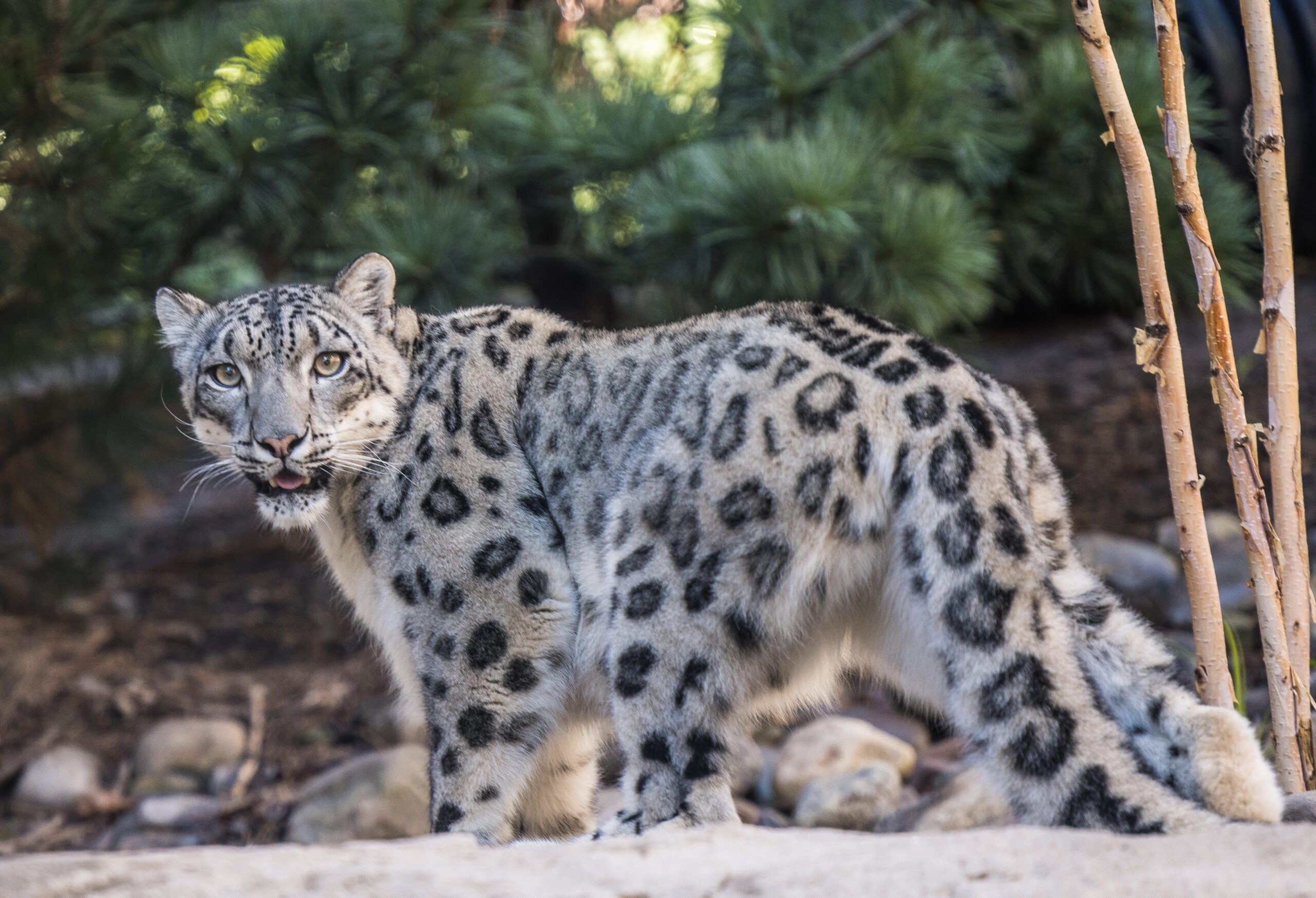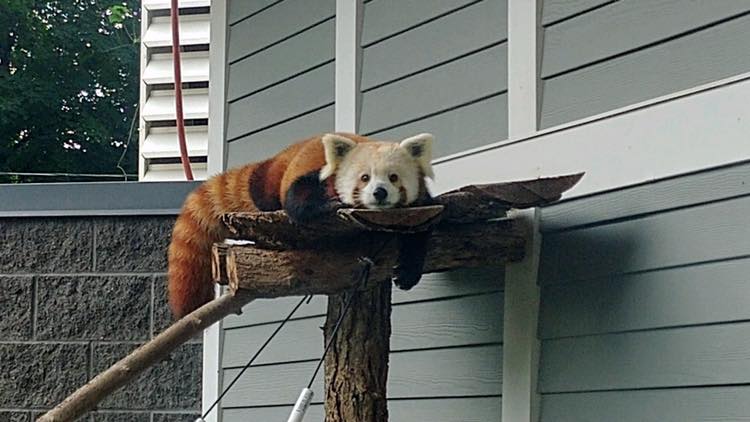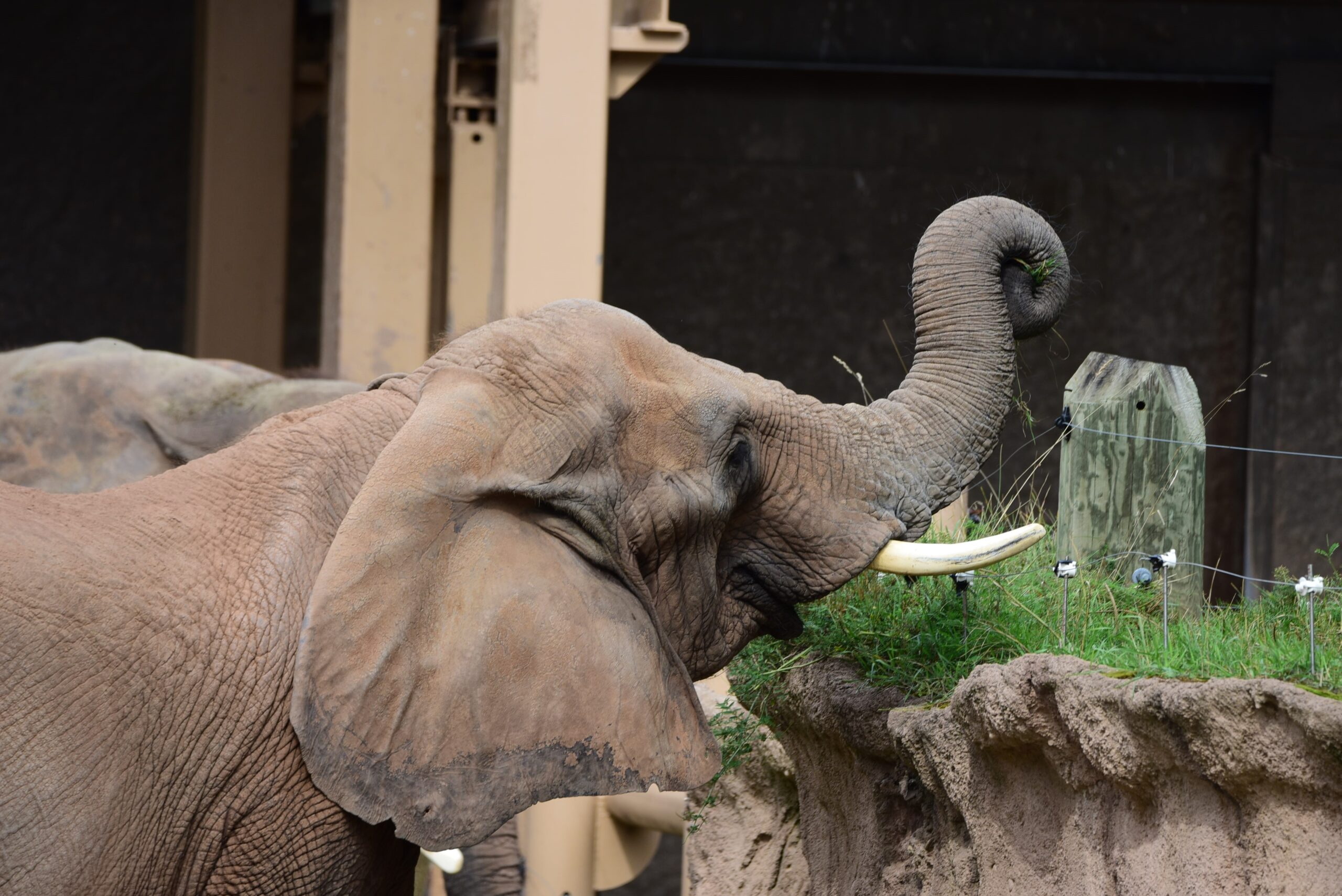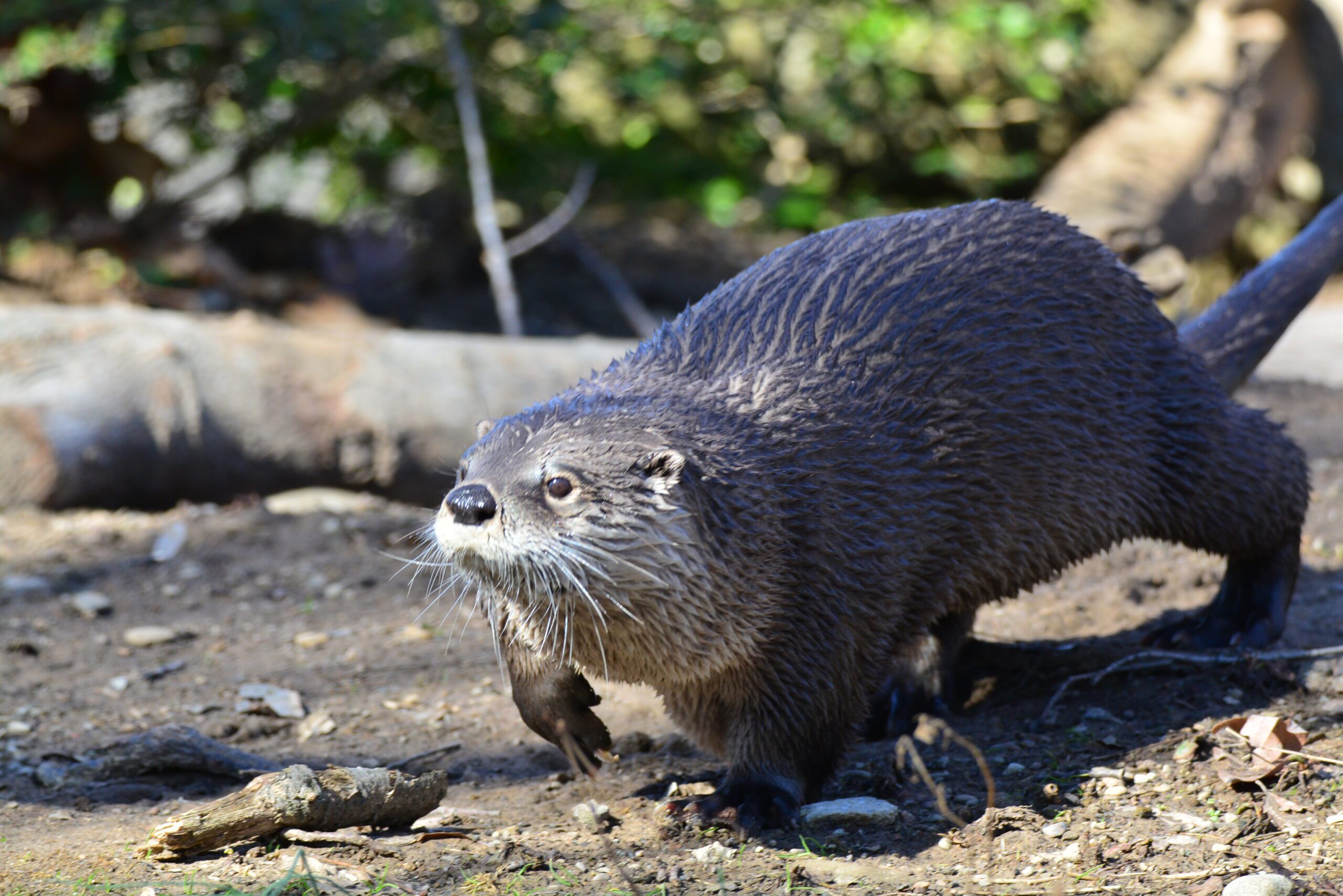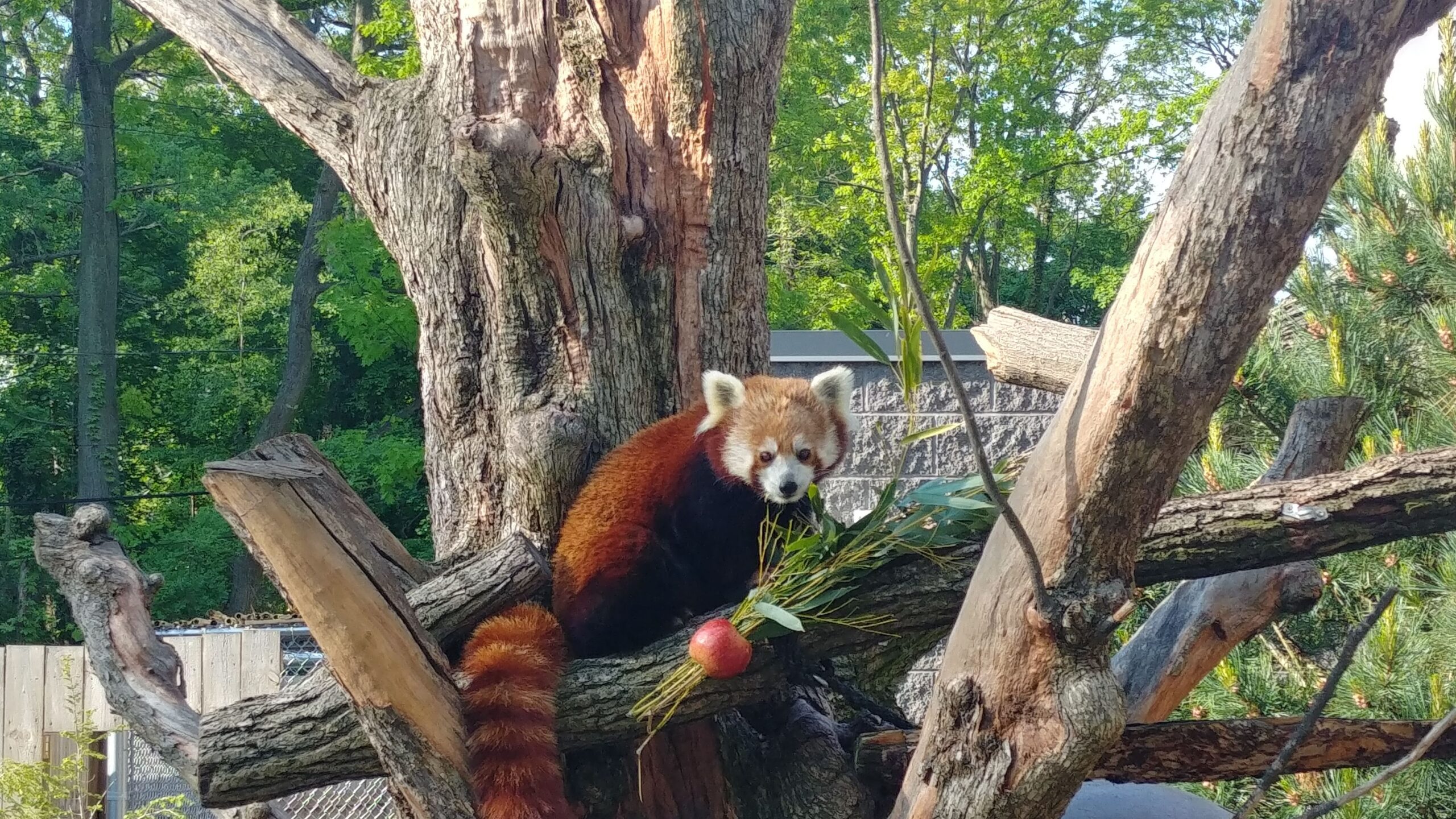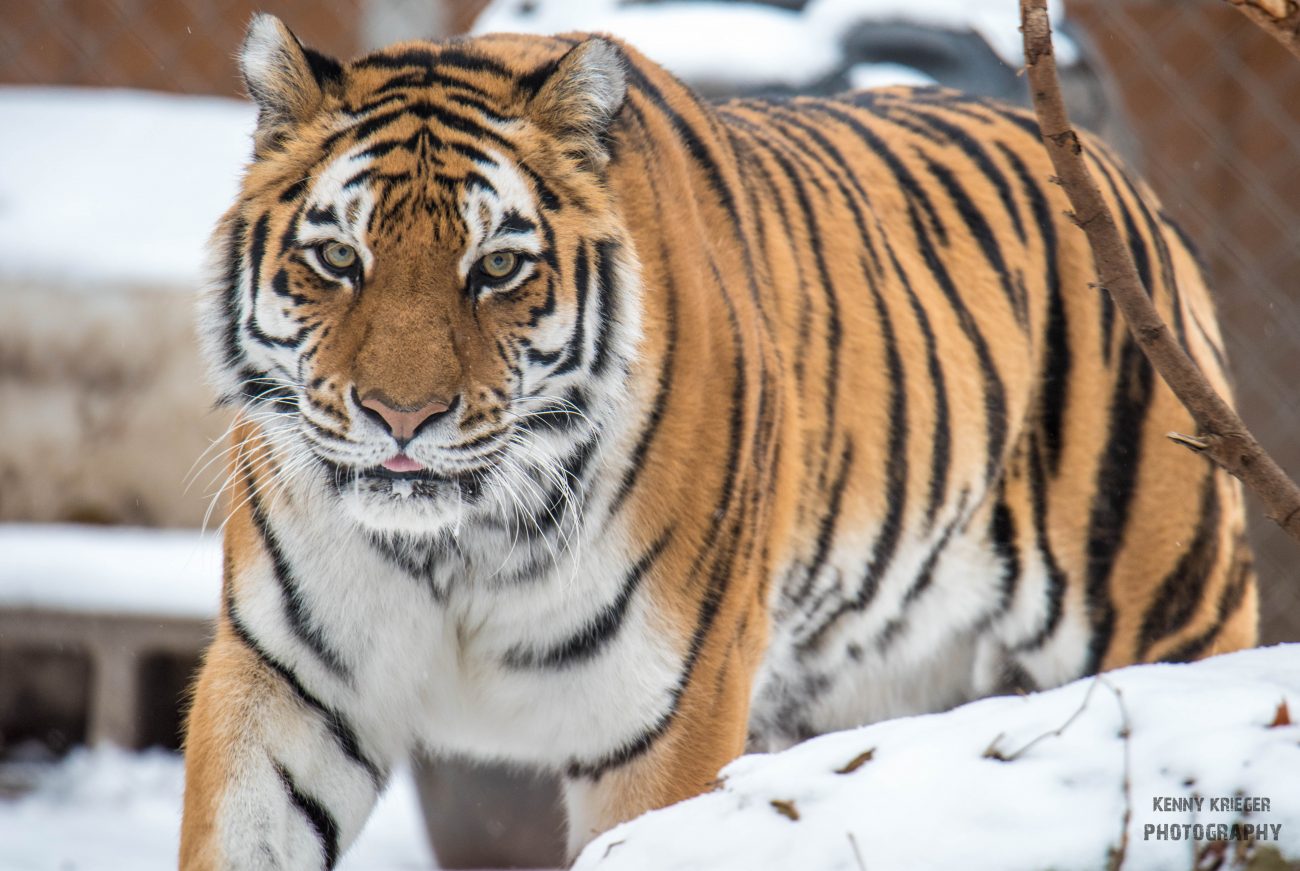November 2, 2020
Early November is the time of year polar bears are making their way towards Hudson Bay, waiting for the sea ice to form. Last year at this time, Zoo Keeper Randi Krieger and Director of Education and Visitor Studies Kelly Ulrich traveled to Churchill, Manitoba to participate in Polar Bears International’s Climate Alliance Program. This is an extract of an article published in January 2020 ZooNooz recounting their experience.
Churchill, Manitoba is known as the polar bear capital of the world. Polar bears migrate past, or through, town to reach the earliest developing sea ice, which forms at the mouth of the Churchill River in Western Hudson Bay. Once the ice forms, the bears go out to hunt seals on the sea ice, returning to land only when the ice recedes. Unfortunately, the sea ice is now forming later and melting sooner, leaving polar bears with less time to hunt. This is resulting in decreased body condition of polar bears, threatening their survival. This region exemplifies how conservation issues affect wildlife and humans. We had the opportunity to spend a week in Churchill with people from all over the country learning what we can do to help protect polar bears.
The concept of the trip was sparked in January 2019, when Krista Wright, the Executive Director of Polar Bears International (PBI) came to Seneca Park Zoo to give a talk on polar bears, and the conservation efforts and research of PBI. During this visit, we learned about PBI’s Climate Alliance Program, which educates zoo professionals about polar bears, sea ice, and the effects climate change is having on the Arctic. Soon after, we applied and were accepted to participate in the 2019 program along with 18 other participants from zoos across the country. PBI also teamed up with the National Network for Ocean and Climate Change Interpretation (NNOCCI) to further the teaching and messaging of climate change for this session.Twenty minutes after landing, we saw our first polar bear!After a long journey, we arrived in Churchill. Twenty minutes after landing, we saw our first polar bear! The bear ran out of the trees, across the road, and down the beach, diving into the Hudson Bay. It was thrilling that we had seen a bear so soon into our trip, and we hoped it wouldn’t be the last! We had our first Tundra Buggy tour, where we saw bald eagles, ptarmigans, and other wildlife. Tundra Buggies are elevated all-terrain vehicles designed to photograph and study polar bears. The trails the Buggy follow are old military roadways; there is no maintenance plan for these trails, which resulted in a very bumpy ride.
The next day after our morning classes, we visited Wapusk Adventures where we met David Daley and his sled dogs. He is a musher who taught us about the traditional connections to dogsledding and how he kept it alive by starting the Hudson Bay Quest, 211-mile race between Churchill and Gillam. We all had an opportunity to go dog sledding with his team, a very fun experience.The next day, we moved to the Tundra Buggy Lodge at Polar Bear Point. We were lucky to spend two nights sleeping out on the tundra, where we could have any kind of wildlife coming right up to the lodge. We were all very excited, since we knew this was our best chance at seeing more bears. All week we were joined by Bill Watkins of the Manitoba Department of Sustainable Management and Heather MacLeod of Parks Canada. They were wonderful and taught us about the history of Churchill and its culture. From the permafrost and periglacial landscape to nomadic tribes hundreds of years ago, we learned how the town developed through exploration and the fur trade.One day, we spent almost eight hours driving around on the buggy looking at wildlife. Finally, as we were driving along the path, someone from the back of the Buggy yelled out, “STOP! BEAR!” Neither of us can recall a group of people falling silent as quickly as we did, until all you could hear were cameras clicking away, as everyone tried to get a snapshot to capture and remember the moment forever. We were lucky to see a beautiful female bear, and based on her behavior, our guides assumed she was a younger bear. Randi recalls, “After I took a few hundred photos, I put my camera down and just enjoyed the moment. I didn’t want to experience it through a lens. As I stood out on the observation deck, I was trembling from excitement at seeing a polar bear in its natural habitat. She was beautiful, and her body condition was good. I wiped tears from my eyes, so happy to have this opportunity to see such an amazing animal up close.”For Kelly, “The moment was surreal. As we drove through the tundra, I could imagine polar bears traversing the landscape, but now I was seeing one with my own eyes! It was an experience that I had hoped for almost half of my life, and now it was a reality.” The polar bear slowly made her way across the land and through the water.Getting to see the Arctic tundra firsthand was a wondrous experience. The landscape looks vast and open, yet the wildlife can find shelter and aptly camouflage with their surroundings. Getting to see the bears in their natural range was amazing but it is equally incredible that you can see one right here in Rochester by visiting Anoki. Next time you’re at the Zoo observing Anoki, take a moment to imagine the lives of polar bears around Churchill and throughout the Arctic. Depending on the time of year, those bears may be on the sea ice hunting seals, breeding, or getting ready to den down to give birth to cubs. Once the ice melts for the season, the bears come onto land and fast for months, just waiting for the ice to form again. They may forage for any food they can find, but these things do not provide the nutritional support the bears need to build up their fat reserves.
The sea ice is vital for polar bears to survive. The shorter sea ice season is due to changes in our atmosphere. Regular carbon dioxide is used and created by normal life processes; plants absorb what animals exhale. Rampant carbon dioxide comes from the burning of fossil fuels like coal, oil, and natural gas for energy. There is too much of it, and it’s getting out of control. This excess carbon dioxide builds up in the Earth’s atmosphere, which is like a blanket, and when we add carbon dioxide to this blanket, it gets thicker and traps heat underneath. This “blanket effect” leads to warming which disrupts the climate. This may seem like a difficult problem to fix, but by taking practical, common sense actions now, we can make real progress to address the problems facing our environment today and protect it for future generations.
– Randi Krieger and Kelly Ulrich

